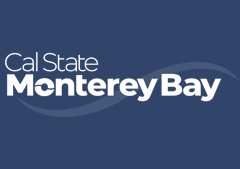Date
Spring 2019
Document Type
Master's Thesis (Open Access)
Degree Name
Master of Arts (M.A.)
Department
Teacher Education
Abstract
Students must be able to read and process academic texts, construct written documents using academic language, and understand spoken language, specifically in English (Lucas, Villegas, & Freedson-Gonzalez, 2008). In the state of California, nearly half of the students speak a language other than English at home (Edwards, Leichty, & Wilson, 2008). Several different interventions have been studied to address the issue of reading comprehension and English Language Learners. Semantic mapping has been successful because in activating student's prior knowledge and connecting to novel topics (Carrell, Pharis, & Liberto, 1989). This study explored the effects of semantic mapping on ELL students. The study used a quasi-experimental, nonequivalent group, pretest-posttest quantitative research design to compare reading comprehension achievement scores among ELL students. During the six-week intervention period, the control group received an unmodified set of lessons drawn from the Wonders ® curriculum, while the treatment group received the pre-reading intervention, semantic mapping. Reading comprehension was measured using the Scholastic Reading Inventory Test (SRI) and data analyzed using independent and paired t-tests. Although the results were not significantly different, the mean score for the treatment group increased more than the control group. These results are consistent with the current research on semantic mapping. Future recommendations include using a larger sample size and conducting interviews with students prior to taking the SRI to determine what strategies were used during testing.
Recommended Citation
Maccagno, Laura M., "Effectiveness of Semantic Mapping in Increasing Reading Comprehension for English Language Learners" (2019). Capstone Projects and Master's Theses. 640.
https://digitalcommons.csumb.edu/caps_thes_all/640

